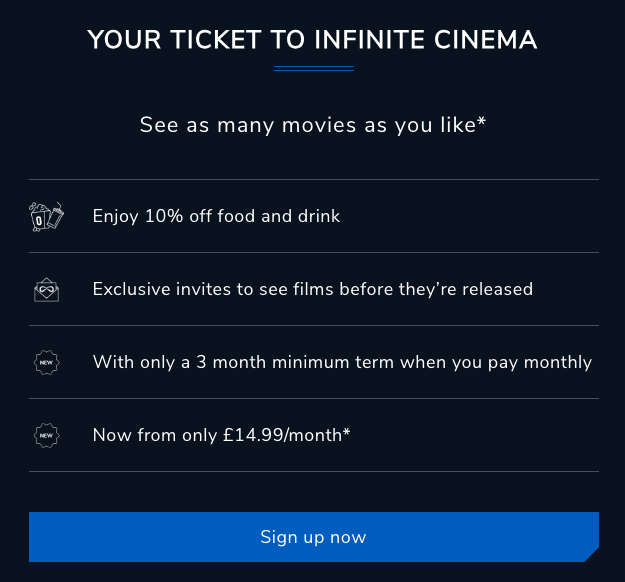
How to Write a Call to Action (with Examples)
If you’re pursuing a career as a content writer or looking to land more freelance clients, you’ll need to understand how to write a call to action.
In this post, we’ll be sharing:
- What a call to action is
- Five tips on writing a call to action
- Three examples of effective calls to action at work
Let’s get started!
What Is a Call to Action?
In content marketing and copywriting, a call to action (often abbreviated to CTA) refers to a short line or phrase that prompts the audience to perform an action.
A call to action might encourage readers to:
- Purchase a product or service
- Visit a web page
- Download an ebook
- Subscribe to a mailing list or newsletter
- Make a lifestyle change
Calls to action can appear anywhere within a piece of content, though they’re usually placed toward the end and often take the form of a button, an image, or a link embedded in the text.
But in order for a call to action to succeed in converting readers, it needs to attract attention and give them a reason for following through.
Read on to discover how you can craft an effective call to action.
How to Write a Call to Action
1. Keep Context in Mind
First and foremost, keep in mind that the length and style of a call to action will depend on its context.
A call to action within a blog post, for example, will tend to be a sentence or two that follows naturally from the rest of the piece.
On the other hand, emails, product descriptions, or social media ads will rely on a single word or phrase, often presented as a button to click.
So, when writing your call to action, make sure you tailor it to the content it’s part of.
2. Make Use of FOMO
In order to encourage your audience to respond to a call to action, you need to appeal to their emotions.
One of the strongest emotions is fear – specifically, fear of missing out (FOMO). FOMO can be a powerful tool for converting readers into customers or clients.
You can make use of FOMO by providing a call to action that:
- Emphasizes exclusivity
Sign up now to receive your unique members-only discount.
Click that subscription button for access to top-secret recipes!
- Suggests urgency
Seats are selling out fast – secure yours now!
For the next 24 hours only, receive a free ebook when you sign up.
By appealing to your audience’s emotions, you give them more of a reason to act on your call to action.
3. Propose a Solution to a Problem
Another way to hook an audience with a powerful call to action is by promising solutions and concrete results.
Start by identifying a problem, then make it clear how following through with the call to action will solve that problem.
And don’t forget to include numbers, figures, and other statistics to back up what you’re promising!
Sick of pesky pests and annoying insects? Order the new sound-based repellent and enjoy a bug-free home in just one week!
4. Pick Strong Verbs
The power of a call to action lies in the verbs you choose to use. This is especially true for a shorter call to action, such as a button in an email, where you don’t have as much space to rely on appeals to your audience’s emotions.
Strong, imperative verbs often found in calls to action include:
- Buy
- Subscribe
- Discover
- Join
- Click
- Find out
- Secure
- Save
- Start
Pair these verbs with a relevant subject or embellish them with an expressive adverb, and you’ve got a snappy call to action for your audience to follow through on.
5. Provide a Clear Course of Action
In order for your audience to follow through on the action you want them to take, they need to know exactly what that action is and how to do it.
You could write a masterful piece of copy explaining exactly why your readers should subscribe to your newsletter, but that won’t do much good if you don’t tell them how to!
This is where instructions, links, pop-ups, and buttons that allow your readers to easily take the next step are essential.
Three Great Call-to-Action Examples
Now that we’ve discussed how to write an effective call to action, here are three real-world examples to help inspire your own.
1. Converse

This call to action on the Converse store’s landing page attracts attention with its bold headline, then targets readers’ FOMO with the phrase “be the first to hear.”
If that wasn’t enough, it adds an extra incentive for customers to sign up (with a 15% off deal) and a handy button that opens a pop-up window where you can enter your email address.
2. ODEON

Cinema chain ODEON promotes its myLIMITLESS cinema pass with a call to action listing the many benefits customers can expect for signing up.
Complete with facts and figures, this call to action also highlights “exclusive invites” to appeal to readers’ FOMO.
3. Proofed

Proofreading and editing provider Proofed demonstrates this call to action on their page for authors.
The targeted headline and copy show they know their audience, while the button takes you directly to their document submission page. The use of the imperative “try” and the promise of a free trial is certain to pique some interest, too!
Becoming A Freelance Writer
Whether you’re a budding copywriter looking to hone your abilities or in the market for a career change, our Becoming A Freelance Writer course will help you gain the confidence and skills you need to thrive as a freelance writer.
Still not convinced? You can try our course for free, no strings attached.





Your email address will not be published.